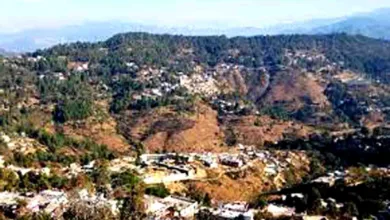Is it too much to ask for at-least one free-flowing river system?

HILLBILLY
 Lokesh Ohri
Lokesh Ohri
The recent flooding of the Ganga in the Himalayas– and I would insist on calling it Ganga because our political masters easily fragment the sacred river in our minds by employing names such as Rishiganga for projects along this river system– has once again exposed human triviality against nature’s brute force. The Himalayan river systems are complex, and several rivulets and streams join to form the Ganga as we see it in Rishikesh or Varanasi. Therefore, every dam constructed in the region is a threat to the ecology of the sacred Mother Ganga and endangers the water security of every Indian.
In the current incident, a number of people have lost their lives and disturbing video footage of people running helter-skelter, only to be finally trapped in the deluge are emerging. Perhaps the most poignant aspect of the tragedy is the fact that residents of Reni village, a hamlet that showed the global environmental movement a new light through Chipko are now demanding relocation. The same people of Reni, living on the edge of India’s most pristine high altitude UNESCO world heritage site, the Nanda Devi Biosphere Reserve, had approached the courts almost two years ago against “rampant blasting, reckless dumping of debris next to the riverbed and tree felling”, with little relief granted to them.
Does it not rattle our political masters that the people who voted them in, the people whose aspirations they were elected to meet, have emerged as the worst afflicted from the processes of “development” unleashed upon them? The question that I would like to pose today is whether it would be too much to ask of our government to allow just one river system, the Ganga that is revered by the entire mass of humanity that voted them to power, to remain encumbrance free.
While the world is realising the benefits of free-flowing rivers, why are our policy makers still stuck in the mire of damming our water sources? For instance, the United States, which has more than 80,000 dams of all sizes, gets only seven per cent of its energy from hydropower today. There are no plans to build any more hydropower plants in that country. Instead, the US has embarked on a large-scale effort over the last several decades to take down dams and restore rivers. So far, nearly 1,500 dams have been removed throughout the country. Two of those, the Elwha and Glines Canyon Dams on the Elwha River in the Pacific Northwest, were removed in 2012 and 2014 respectively. Since then, several species of adult fish, including sockeye salmon and bull trout, have returned to the Elwha. Similar dam removal projects are underway in western Europe, with France, for example, planning to soon remove two large dams from the Selune River in Normandy. Meanwhile, a project called Dam Removal Europe is focusing on clearing European rivers of the 30,000 old or obsolete dams that still exist.
Our cities are starved for power, and hydropower may not be as hazardous if we manage to keep our projects small scale, without disturbing the flow of the river. Rather than large dams blocking the flow of rivers and damaging the ecology, subjecting communities to disasters, can we not think of thousands of small units along streams and rivulets?
Today, more than ever, I am reminded of the words of scientist friend Yogeshwar Kumar, who has been working on small hydro-power projects for years. He has demonstrated that one can generate electricity from even small streams and torrents, so abundant in the Himalayas. He had presented a paper at a conference I organised on the Ganga, and this is what he had to say,“Hydropower from large dams and large reservoirs may lead to disasters, but there are thousands of small and tiny power houses that have been workhorses for small and cottage industries for more than two centuries. These tiny power houses have provided electricity and mechanical power for irrigation, drinking water and livelihoods at lowest cost to dispersed communities in rich and developing world. There is no replacement by any other source at this cost.”
In fact there are numerous smaller streams and waterfalls in the Himalayas that can be further harnessed without damaging ecology, and provide much needed energy to communities eagerly waiting for low cost power. There is a large percentage of population still living in darkness without access to low cost energy, in these mountains, which makes them jobless, eagerly waiting to migrate. Small or micro hydroelectricity generation can emancipate them, giving the much needed boost to micro-industry and ecotourism.
In no case should we now opt for gigantic hydropower units. When we dam a river, we suddenly alter the ecology, creating a large reservoir, with the fish and other living organisms disappearing. What is worse is that the stagnant waters become warmer. This has affected the Ganga in great measure with the river waters losing some of their self-renewing qualities. In the past, this quality of the water, of not putrefying even when kept in bottles for extended periods had rendered it sacred. More than ever, this disaster must become a call to save our sacred river.
In fact, we must now only look into the benefits of small and micro hydropower, how small investment can lead to prosperity by giving locals employment in mountain regions. These micro-units are capable of producing power twenty-four by seven. There had been more than a hundred thousand watermills across the Himalayan region in the past, now mostly lying defunct. Their partially surviving structures can be seen all over the mountain areas. Most of the owners have rights over land and water, and thus unnecessary permissions are not required. Can we not convert these into economic powerhouses through infusion of latest technical advances in micro-power generation?
All these units can be salvaged and transformed into efficient multipurpose hydropower mills for irrigation, drinking water, rural industry, ecotourism and generation of power. The power of these units can be used for rural infrastructure, e-medicine, e-banking, agro processing heating and refrigeration for further processing and storage of horticultural produce or even mushrooms. The uses will depend on how you want to use the energy. One sees a great potential for these units if we, and government agencies, apply themselves to the task.
Is anyone listening?(The writer isan anthropologist, author, traveler & activist who also runs a public walking group called Been There, Doon That?)
Monday, 15 February 2021 | Lokesh Ohri






